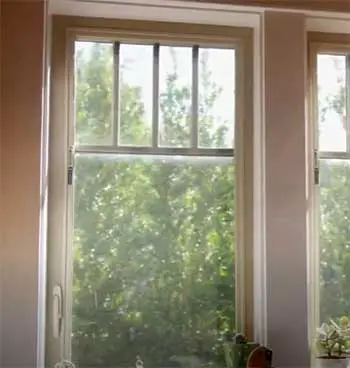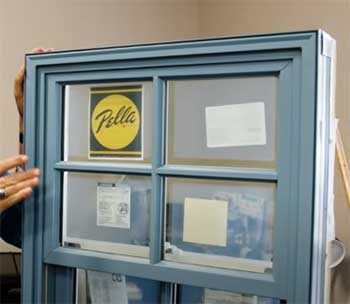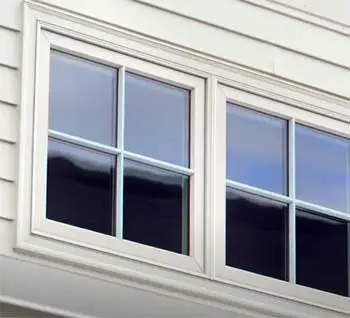When I set out to replace the windows in my home, I wanted options that balanced style, efficiency, and value. Two brands kept popping up: Soft-Lite and Pella. Both are heavyweights in the window industry, but which one fits my needs—and yours—best?
In this article, I’ll walk you through my research, comparing Soft-Lite and Pella based on their features, performance, and quirks.
With a detailed pros and cons breakdown, a comparison table, and answers to common questions, you’ll have everything you need to make an informed choice for your home.
A Brief Comparison Table
| Feature | Soft-Lite Windows | Pella Windows |
| Primary Material | Vinyl | Vinyl, Fiberglass, Wood |
| Price Range (per window) | $370–$800 | $250–$1,750 |
| Energy Efficiency | Triple-pane, Low-E, argon/krypton gas | Triple-pane, Low-E, argon gas, smart tech |
| Warranty | Lifetime, transferable | Limited lifetime, 10 years upon transfer |
| Customization Options | Extensive styles, colors, grilles | Wider range of styles, colors, materials |
| Installation | DIY or professional, no in-house service | Professional, in-house installation available |
| Availability | Midwest, Eastern U.S. | Nationwide, via Lowe’s and showrooms |
| Key Strength | Energy efficiency, affordability | Variety, premium materials, brand recognition |
| Key Weakness | Limited geographic reach | Higher cost, complex warranty terms |
My Journey Into Window Shopping
I’ll be honest—choosing windows felt overwhelming at first. My old windows were drafty, and my energy bills were creeping up. I wanted replacements that looked good, saved money, and lasted for years. Soft-Lite and Pella stood out because of their reputations, but I needed to know what made them different.
So, I rolled up my sleeves, visited showrooms, talked to contractors, and scoured homeowner feedback. Here’s what I found, broken down into the key factors that matter most when picking windows: materials, energy efficiency, cost, customization, installation, and support.
Materials: What Are These Windows Made Of?
Let’s start with what these windows are built from, because the material impacts everything from durability to maintenance.
- Soft-Lite’s Vinyl Focus

Soft-Lite sticks to vinyl, and I mean exclusively vinyl.
This family-owned company, based in Streetsboro, Ohio, has been crafting vinyl windows since 1934.
Vinyl’s a solid choice—it’s affordable, low-maintenance, and resists rot and corrosion.
I was impressed by how Soft-Lite’s windows, like their Elements and Imperial LS series, use high-quality polyvinyl chloride (PVC) that’s fusion-welded at the corners for airtight seals.
The downside?
If you’re dreaming of wood’s classic warmth or fiberglass’s sleek strength, Soft-Lite won’t scratch that itch. It’s vinyl or nothing.
- Pella’s Material Variety
Pella, founded in 1925 in Iowa, plays a different game. They offer vinyl, fiberglass, and wood, giving you more choices. Their Encompass series uses vinyl for budget-conscious folks like me, while the Impervia line leans on fiberglass for durability.
Their wood windows, like the Architect Series Reserve, are stunning but pricier. I loved the idea of wood for my living room’s aesthetic, but the maintenance—painting, sealing—made me hesitate. Fiberglass intrigued me for its strength, but I wondered if it justified the cost over vinyl.
Pella’s variety is a strength, but it can feel overwhelming if you’re not sure what you need.
Energy Efficiency: Keeping Your Home Cozy
Energy efficiency was a big deal for me. I wanted windows that kept my house warm in winter and cool in summer without spiking my utility bills.
- Soft-Lite’s Energy-Saving Edge
Soft-Lite’s windows are built for efficiency. Their triple-pane glass, filled with argon or krypton gas, minimizes heat transfer. Low-E coatings reflect infrared light, keeping indoor temperatures stable.
Their Elements series boasts U-values as low as 0.15, which is impressive for vinyl. I noticed my friend’s Soft-Lite windows in Ohio kept his home so comfortable he barely touched the thermostat.
The foam-insulated frames and sashes also reduce air leakage, with air infiltration ratings often below 0.15 CFM. If energy savings are your priority, Soft-Lite delivers big time.
- Pella’s High-Tech Approach

Pella doesn’t skimp on efficiency either.
Their triple-pane options, like the Lifestyle Series, use Low-E coatings and argon gas, similar to Soft-Lite.
Some models even integrate smart technology, letting you monitor and control windows remotely for added efficiency.
I was intrigued by Pella’s claims of reducing energy costs, but their U-values (around 0.25 for vinyl models) aren’t quite as low as Soft-Lite’s best.
Still, their wood and fiberglass options offer excellent insulation, especially in extreme climates.
For tech-savvy homeowners, Pella’s smart features are a cool bonus, but they come at a premium.
Cost: What’s the Damage to Your Wallet?
Budget matters, and I wanted windows that gave me bang for my buck without breaking the bank.
- Soft-Lite’s Affordable Appeal

Soft-Lite’s price tag was a pleasant surprise.
On average, their windows range from $370 to $800 per window, including installation.
Their Imperial LS and Pro series are particularly wallet-friendly, making them ideal for whole-house replacements.
I got a quote for 10 windows at around $5,500, which felt reasonable for the quality.
The lifetime warranty also sweetened the deal, covering me if anything went wrong. However, costs can vary depending on your region and installer, since Soft-Lite doesn’t handle installations themselves.
- Pella’s Premium Price
Pella’s prices are all over the map. Their vinyl Encompass series starts as low as $250 per window, but wood or fiberglass models, like the Architect Series, can hit $1,750 or more. Installation, often handled by Pella’s certified pros, adds $250–$450 per window.
For my 10-window project, Pella quoted me around $8,000 for vinyl, but wood pushed it closer to $12,000. If you’re after luxury or custom designs, Pella’s worth the splurge, but for budget shoppers, their high-end options might feel out of reach.
Customization: Making Your Windows Your Own
I wanted windows that matched my home’s vibe, so customization was key.
- Soft-Lite’s Stylish Options
Soft-Lite offers a solid range of styles—double-hung, casement, bay, bow, sliding, and more. You can tweak colors, grilles, and hardware to fit your home’s look. I liked their Classic Plus line for its clean, modern aesthetic and the option to add decorative grids for a traditional touch.
However, their color palette, while decent, isn’t as extensive as I’d hoped, and custom shapes are limited compared to bigger brands. Still, for vinyl-focused buyers, Soft-Lite’s customization gets the job done.
- Pella’s Endless Possibilities

Pella’s customization game is next-level.
With eight window styles and three materials, you can mix and match to your heart’s content.
Want a bold red exterior with a wood interior?
Pella’s got you. Their Reserve series offers intricate grille patterns and custom shapes, perfect for historic homes.
I was tempted by their patio doors with built-in blinds, a feature Soft-Lite doesn’t offer. The catch? More options mean more decisions, and custom orders can inflate costs and lead times significantly.
Installation: Getting It Right
A window’s only as good as its installation, so I dug into how these brands handle it.
- Soft-Lite’s DIY or Dealer Approach
Soft-Lite manufactures windows but leaves installation to local contractors or DIYers. This can save money—I found contractors quoting $200–$300 per window—but it’s a gamble. A bad installer can lead to leaks or drafts, and Soft-Lite’s warranty doesn’t cover installation errors.
Their website offers training videos, which helped when I considered DIY for a small project. If you go with Soft-Lite, vet your installer carefully to avoid headaches.
- Pella’s Professional Touch
Pella offers in-house installation through certified contractors, which I found reassuring. Their pros use specialized tools and sealants to ensure a tight fit. My neighbor’s Pella installation was seamless, with no mess left behind.
However, this white-glove service comes at a cost, and some homeowners report pushy sales tactics or delays in scheduling. If you value a streamlined process and don’t mind paying extra, Pella’s installation is a strong selling point.
Warranty and Support: Who’s Got Your Back?
I wanted peace of mind that my investment was protected, so warranties and customer service were high on my list.
- Soft-Lite’s Rock-Solid Warranty
Soft-Lite’s lifetime warranty is a standout. It covers materials, glass, and hardware, and it’s transferable if you sell your home. I spoke to a homeowner who had a warped sash replaced for free, no questions asked.
Their customer service, while not as flashy as bigger brands, is responsive and straightforward. The catch? Since Soft-Lite relies on dealers, your experience depends on the local team. In the Midwest, where they’re based, support is stellar, but it can be spottier elsewhere.
- Pella’s Complex Coverage
Pella’s limited lifetime warranty covers most components, but it gets tricky. Glass is covered for 20 years, and labor is only included for two years for the original owner. If you transfer the warranty, it drops to 10 years.
I found their warranty terms harder to parse than Soft-Lite’s, and some homeowners complain about denied claims due to fine print. Pella’s customer service is hit-or-miss—my local showroom was helpful, but online reviews mention long wait times and unresponsive support.
Pros And Cons of Soft-Lite And Pella Windows
Let’s get to the meat of it. Here’s how Soft-Lite and Pella stack up, based on my research and hands-on experience.
Soft-Lite Pros
- Affordable Pricing: At $370–$800 per window, Soft-Lite is easier on the wallet than Pella’s higher-end options.
- Top-Notch Energy Efficiency: Triple-pane glass, Low-E coatings, and foam insulation make Soft-Lite a leader in keeping energy bills low.
- Lifetime Warranty: Transferable and comprehensive, it’s one of the best in the business.
- Low Maintenance: Vinyl windows are a breeze to clean and don’t need painting or sealing.
- Customization Options: Plenty of styles and finishes to personalize your home.
Soft-Lite Cons
- Vinyl Only: No wood or fiberglass options, which limits aesthetic choices.
- Limited Availability: Primarily available in the Midwest and Eastern U.S., so you might struggle to find a dealer elsewhere.
- No In-House Installation: You’re on your own to find a reliable installer, which can be risky.
- Fewer Custom Shapes: Less flexibility for unique or historic home designs.
Pella Pros
- Material Variety: Vinyl, fiberglass, and wood cater to different tastes and budgets.
- Nationwide Availability: With showrooms and Lowe’s partnerships, Pella’s easy to find anywhere.
- Innovative Features: Smart technology and built-in blinds add modern flair.
- Professional Installation: Certified installers ensure a high-quality job.
- Extensive Customization: More styles, colors, and shapes than Soft-Lite.
Pella Cons
- Higher Costs: Prices range from $250 to $1,750, with wood and fiberglass pushing the upper end.
- Complex Warranty: Terms vary by product, and coverage drops upon transfer.
- Customer Service Issues: Some homeowners report delays or unhelpful support.
- Vinyl Quality: Pella’s vinyl windows don’t match Soft-Lite’s energy efficiency.
My Experience Testing The Waters

To get a real feel for these brands, I visited a Pella showroom and a Soft-Lite dealer.
The Pella showroom was sleek, with interactive displays showing off their wood and fiberglass windows.
I loved the look of their Architect Series, but the price tag made me wince.
The Soft-Lite dealer, a smaller operation, let me test their Elements windows.
They felt sturdy, and the triple-pane glass was noticeably thicker than Pella’s vinyl options. I also talked to a contractor who’d installed both brands.
He praised Soft-Lite’s energy efficiency but said Pella’s installation process was smoother for complex projects.
Which Brand Suits Your Home?
Choosing between Soft-Lite and Pella depends on your priorities. If you’re like me, watching your budget and craving energy savings, Soft-Lite’s vinyl windows are hard to beat. Their triple-pane technology and lifetime warranty give you long-term value, especially in colder climates.
But if you want premium materials or live in an area where Soft-Lite isn’t available, Pella’s variety and nationwide reach make it a strong contender. For historic homes or high-end projects, Pella’s wood and fiberglass options add a touch of luxury Soft-Lite can’t match.
FAQ: Quick Answers To Your Questions
Yes, Soft-Lite windows are excellent, especially for energy efficiency and affordability. Their vinyl windows offer triple-pane glass and strong warranties, making them a great choice for budget-conscious homeowners.
Soft-Lite Windows is a family-owned manufacturer based in Streetsboro, Ohio, producing vinyl windows and doors since 1934.
Soft-Lite, Andersen, Marvin, and Okna are key competitors to Pella, offering similar high-quality windows with varying materials and price points.
Common issues include higher costs, complex warranty terms, and inconsistent customer service. Some homeowners report installation delays or water infiltration due to poor installation.
Conclusion: Your Window, Your Choice
As I wrapped up my window hunt, I realized there’s no one-size-fits-all answer. Soft-Lite won me over with its energy efficiency and straightforward pricing, perfect for my practical needs.
But Pella’s versatility and premium options might be your pick if you’re after luxury or unique designs. Weigh your budget, climate, and style preferences.
Visit showrooms, get quotes, and talk to installers. Whatever you choose, you’re investing in your home’s comfort and value—so make it count.
